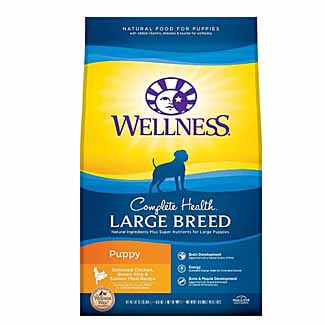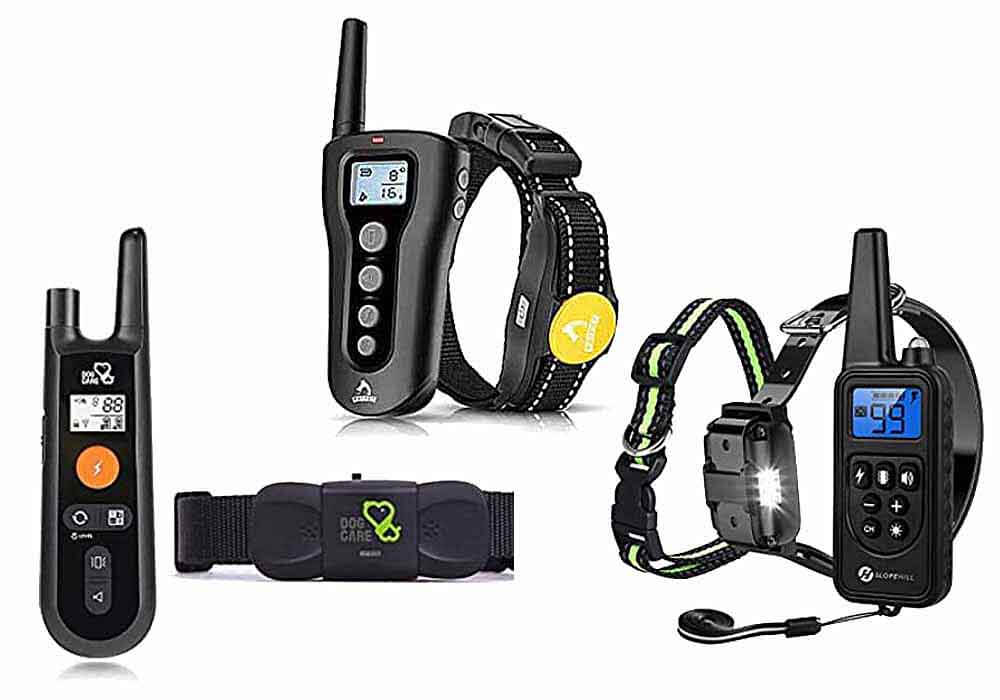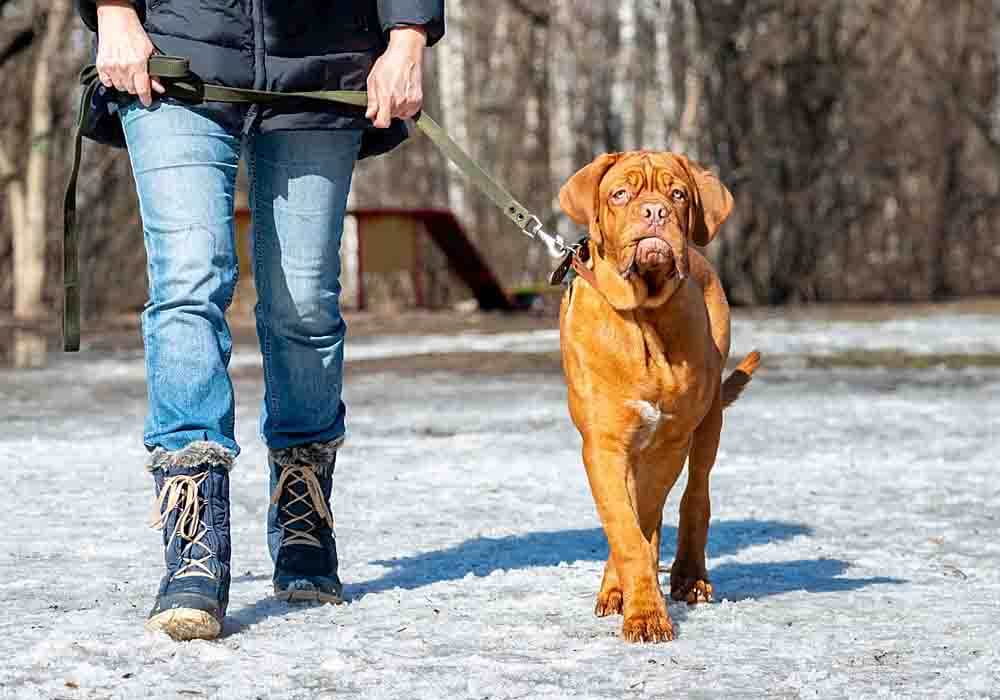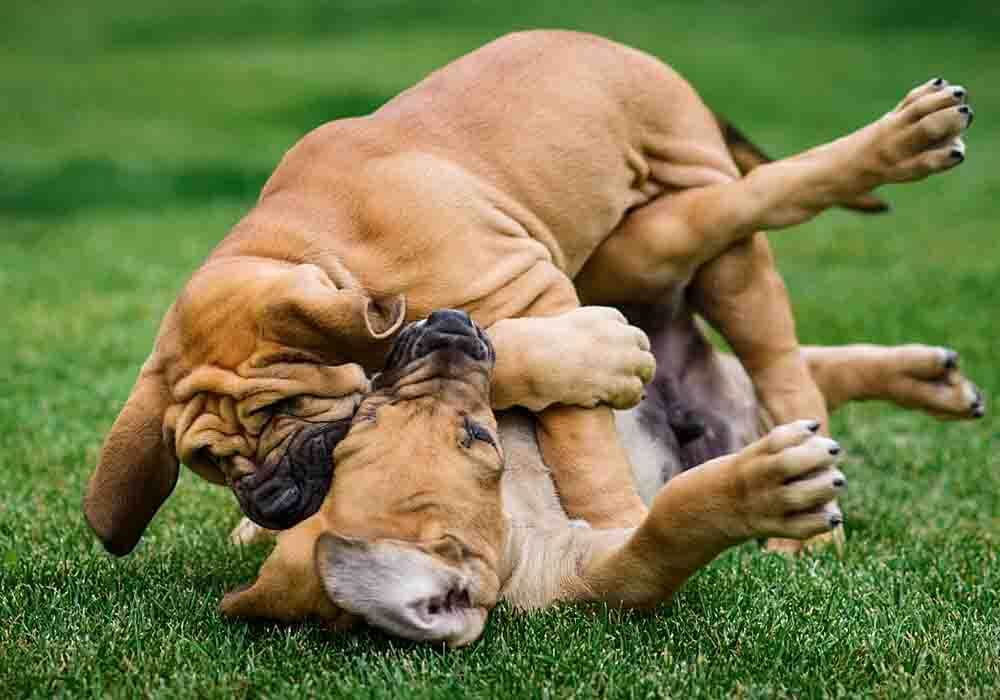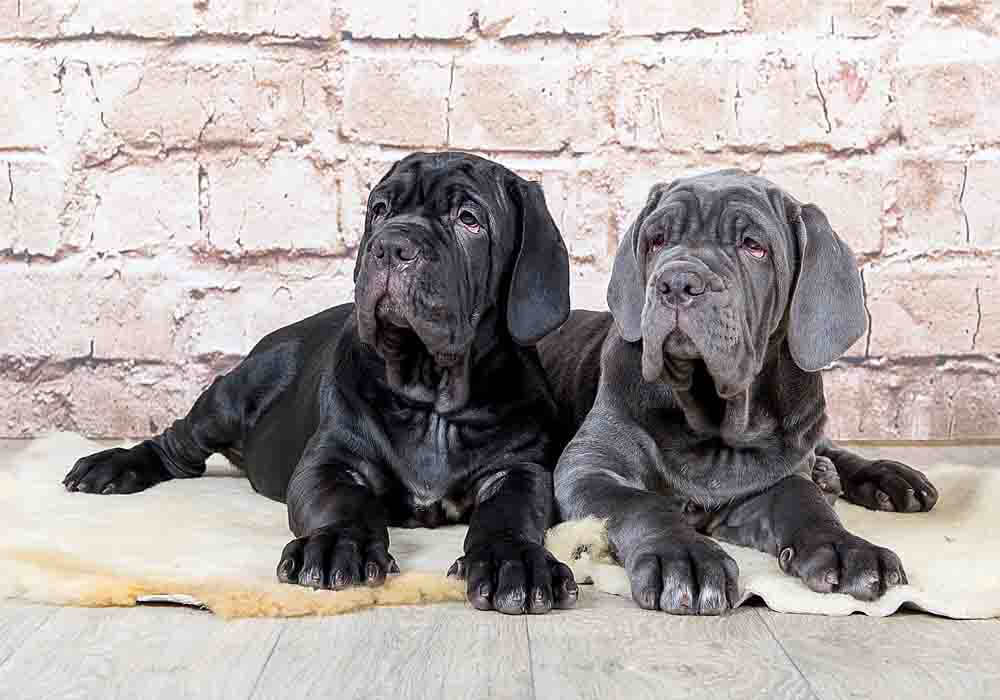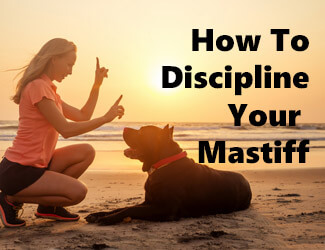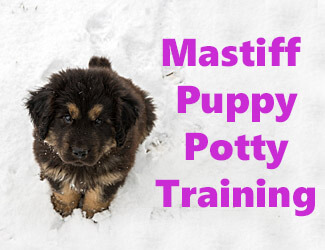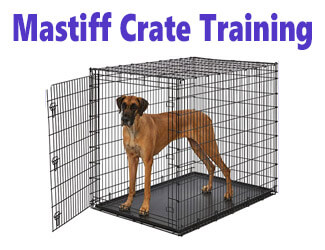Mastiff Puppy Potty Training
These 3 Helpful Tips
Make House Training Easier
by Ken Alden
Mastiff puppy potty training is one of the highest priorities you have when you finally bring your new Mastiff puppy home. At first your puppy has some adjusting to do, like learning his new eating schedule, which toys he can play with, and where he should go and relieve itself.
Mastiff Puppy Potty Training Tips...
- Invest in potty training pads to be prepared for accidents.
- Purchase cleaning supplies to keep your house free of pet odors.
- Teach your puppy to use puppy pads or doorbells to relieve himself.
- Develop a schedule that both you and your puppy can stick to.
First...the best way to prepare to potty train your Mastiff is by investing in useful products to simplify the process because until trained, we guarantee there will be a few “accidents”
Then...We'll discuss some mastiff puppy potty training techniques.
Read All About It Below...
Pro-tip: Ever try lifting a Mastiff? Their weight can hurt not only your back but their joints when they hop down from cars, sofas or even your bed. To protect your back and theirs check out the best Mastiff ramps on Amazon.com now.

A Few Useful Products...
When you take your first step into your local pet store, you’ll be overwhelmed by the sheer number of products in each aisle. The best way to make the buying process easier is by figuring out how you plan to potty train your puppy.
There are quite a few products that everybody could benefit from
having in their cabinets, including pet odor eliminators and indoor potty pads.
Depending on your long-term goals for your Mastiff’s bathroom habits, you may
also consider attractant sprays, poop bags, doorbells, and pooper scoopers.
Indoor Potty Pads
No matter what your Mastiff puppy potty training method actually is, you should invest in potty pads for the first few weeks or months with your new Mastiff puppy. He might have some trouble controlling his urges to go and these products will save you the hassle of cleaning up after every mess.
If you’re planning on keeping a potty pad around the house for your puppy to use even as he gets older, there are some long term options that you might want to look into.
Some dogs are uncomfortable with going to the bathroom on a pad and prefer the feeling that they’re relieving themselves in the grass. Wouldn’t it be great if you could just put a patch of grass in your house for your puppy to use?
Good news!
There are quite a few products on the market that are designed to mimic the appearance and texture of grass. Not only will your dog think he’s peeing in the grass, but synthetic grass puppy pads are also less likely to absorb the scent and waste products associated with urine.
That makes these products a great long term and cost-effective solution for potty training your Mastiff.
Many products, such as the Fezep
Artificial Grass Dog Pee Pads, will provide your Mastiff puppy with an incredible amount of
space to go potty with easy cleanup for you after!
Attractant Spray
When you’re looking to use potty pads in your home on a daily basis, you might have to put forward a bit more effort to encourage your dog to use the pad. That’s where attractant sprays can come in handy.
If your puppy is having trouble getting used to peeing in the house on his potty pad, you can generously spray these attractant sprays on the location you want your puppy to use (the potty pad, in this example).
These attractant sprays usually include pheromones. When your puppy smells these pheromones, he’s more likely to relieve himself in the area of the pheromones.
What’s better is that you won’t have to use these sprays forever.
When your Mastiff eventually gets the hang of where he’s supposed
to go, you can begin to reduce how often you use the spray until you eventually
don’t need to use it anymore.
Pro-tip: Mastiff anxiety, aggression, destructive chewing, jumping up, fearfulness, and other behaviors can be controlled with the right training program.
Here’s a great course that
addresses these issues along with many other dog training basics: Check it out now!
Pet Odor Eliminator
Accidents are impossible to entirely avoid. But, failing to properly clean up after one accident can actually lead to further accidents in the same area.
When your dog relieves himself, pheromones are released. As these pheromones and the scent of urine soak into your carpet or floor, your dog will continue to smell them well after you’ve cleaned up the mess.
If he continues to link the pheromones in the carpet to the desire to relieve himself, you might find yourself in a seemingly endless cycle of your puppy peeing on the carpet.
There are many products on the market that can help you to remove the odor associated with potty training while also keeping your house sparkling clean. Here are a few features of sprays you can invest in.
- Stain removal
- Reduction in odor
- Breakdown of enzymes associated with urine
It’s always better to be over-prepared than underprepared. That’s especially the case when it comes to your puppy relieving himself in the house.
In addition to using these sprays directly on your carpet and fabric, you can also buy pet-specific air fresheners designed to minimize the odors associated with puppies.
Products like Stuart
Pet Supply Co.’s Professional Strength Pet Odor Eliminator can help you to easily remove the odors and
enzymes that dig deep within your carpet when your dog has an accident.
Dog Poop Bags
It’s almost guaranteed that your puppy will have to use the bathroom each time he goes for a walk. One of the worst feelings of owning a puppy is realizing that you don’t have a bag with you to clean up after your puppy.
It’s even worse when you realize after he’s already started going.
Not only is it illegal to not pick up after your dog, but it also won’t help your relationship with your neighbors.
Rather than using old plastic bags from grocery stores, you can purchase poop bags designed specifically for dog waste. They usually come in rolls and are much less wasteful than using larger shopping bags.
What’s great is that these bags typically come with a dispenser that you can latch onto your dog’s leash. Every time your dog has to go, you’ll always have a bag ready to clean up after him.
Some are even biodegradable!
Earth
Rated makes some great dog
poop bags, with 15 bags per roll and a 100% leak-proof guarantee. They’re also
made of recycled materials.
Pooper Scooper
If you have a large fenced-in yard that’s the perfect size for your Mastiff to run around in, there’s really no need for immediate clean up when it comes to your dog’s poop. Though the smell may get to be too much, it’s ultimately your property.
When you invest in a pooper scooper, you put a reasonable amount of physical distance between you and your dog’s waste. Whether it’s a spade, tube, or scooping mechanism, you’ll easily be able to clean up after your dog without getting your hands involved.
The best part about this is that you don’t have to clean up after your new Mastiff every day. You might be able to get away with going out into the backyard and cleaning up after him every few days or once a week.
All in all, it depends on how often your dog relieves himself and
how much of a mess it makes.
Doorbell
Doorbells aren’t just for humans anymore and your Mastiff is 100% smart enough to figure out how to use a doorbell to let you know that he has to go outside.
If you have the time and effort to train your dog to use a doorbell, you can reduce the need to have odor eliminators and cleaning supplies constantly on hand.
There are quite a few options when it comes to dog doorbells, ranging from actually hanging a few bells from your doorknob to electrical systems to allow your dog to alert you of his bathroom needs.
Here are some of the benefits of each type of dog doorbell.
Actual bells: When your dog presses his nose or paw up to these bells, you’ll be able to hear them across the house. He’ll also be able to associate the sound of opening the front door with the bell, which ultimately leads to him going outside.
Electronic doorbells: These are much more visually appealing, take up less space, and even allow you to adjust the volume associated with the bell. It might take some extra effort from your Mastiff to ring it, but it’ll still get the job done.
Dog doorbells can be a great investment and can help you and your
puppy communicate better. However, you need to make sure that you’re putting in
an appropriate amount of effort to fully train your dog to associate the
doorbell with relieving himself outdoors.
Pro-tip: Mastiff's (and their owners) love dog crates…and for good reasons. Crates keep dogs from mischief while you're away, are perfect for house training, for traveling by car, and provide the dog a place to de-stress. Check out the best Mastiff crates on Amazon.com now.
How To Potty Train A Mastiff Puppy
Now that you’ve stocked up on the appropriate supplies to finally do some Mastiff puppy potty training, it’s time to develop a plan. The most important thing you can do is select a plan that you’re capable of maintaining and enforcing with your puppy.
No matter what method you ultimately decide on, you need to create some sort of schedule to help your puppy adapt to the routine in your home. When you allow your puppy to become accustomed to your home’s routine, he’ll be potty trained much more quickly without any added stress.
Here's our 3 Mastiff puppy potty training tips...
1. Doorbells Work Great!
The intelligence level of the average Mastiff makes them the perfect breed for dog doorbells. What better way to potty train your puppy than to have them tell you when they have to go?
Dog doorbells are most commonly hung on the doorknob of the door that you and your dog normally use to go in and out of the house. There are also electronic versions that’ll cost you a pretty penny, but can be much more effective.
In order to train your new puppy to use the dog doorbell, you need to break the process down step-by-step. Here’s a play-by-play for training your dog to use these products.
- Teach your dog to touch the bell. Exactly how your dog touches the doorbell will depend on how you train your dog. You can train your Mastiff to touch the doorbell with their front paw or gently nudge it with their nose.
- Reward your dog for touching the doorbell. In order to train a dog, you need to offer rewards for the behavior that you’re looking for. When your puppy touches the bell, you should praise him verbally and with a treat.
- Hang the doorbell on the door you plan to use. This will allow your dog to get used to the actual location of the doorbell. At this point, you should be training your puppy to touch the doorbell as it hangs from this particular door.
- Reward your puppy. This is the same as before. Reward the behavior you want to see.
- Associate the doorbell with going outside. Each time you go outside, touch the doorbell and allow it to jingle. As soon as it makes the noise, open the door and bring your puppy outside.
The only way to make this work is by making it a habit. That means
jingling the doorbell each time you bring your puppy outdoors until he
eventually learns to ring it himself. Eventually, your Mastiff will begin to
associate ringing the doorbell with going outside to relieve himself. Mastiff puppy potty training
2. Puppy Pads Work Well For Those On The Go
If you’re the type of person with an active lifestyle and you spend long periods of time away from home, you might want to train your puppy to use potty pads so he can relieve himself appropriately inside the house.
To successfully train your dog to use puppy pads, you need to select a consistent location where you’ll place the pad. That’ll allow your Mastiff to develop a routine and get used to the physical location where he should be going to the bathroom.
Here’s a brief overview of how you can train your new puppy to use puppy pads inside your home.
- Select a location where you’ll always have a puppy pad. By remaining consistent, your puppy will begin to associate a specific location of the house with going potty.
- Bring your puppy over to the potty pad. The best way to do this is to bring your puppy over when you know he has to relieve himself. That might be as soon as he wakes up from his afternoon nap or when he starts to show signs that he has to go.
- Reward your puppy when he uses his pad. As soon as he goes where he’s supposed to, make sure you verbally reward him and give him a treat. This will help to build a habit.
- Change the pad and continue the cycle. After your Mastiff relieves himself on the pad, throw the dirty potty pad away and replace it with a fresh one. Continue this cycle until your puppy fully understands that he should be going potty on the pads.
You might be afraid of encouraging your Mastiff to relieve himself
in the house because you’re worried he’ll go just about anywhere. As long as
you’re repeatedly encouraging him to use the potty pad, there should be minimal
risk of accidents.
3. Developing A Schedule: Dogs Are Creatures Of Habit
If you’re more of the old school type, you might want to just take your puppy on several walks per day around the neighborhood. This is completely reasonable and only requires you to set a consistent schedule that you and your puppy can get used to.
Dogs are much more likely to learn when there’s consistency. In fact, your Mastiff is definitely smart enough to learn to associate certain triggers with rewards and actions, which makes setting a schedule the best thing for potty training your puppy.
Here are some guidelines for developing a schedule...
- Understand that your puppy will pick up on triggers. If you make a scene of lacing up your shoes immediately before you bring your puppy for a walk, he’ll eventually get excited and predict a walk each time you put on your shoes.
- Identify your own triggers. You might want to piggyback off of your feeding schedule to create a routine for bringing your dog for a walk. If you consistently take your puppy outside after he finishes his meals, he’ll know exactly when he’ll be going outside and be able to better control his urges.
- You decide on the schedule. Your Mastiff puppy is already smart and he might begin to realize that each time he sits by the front door, you take him outside. At a certain point, he might sit there because he wants to go outside, not because he actually has to relieve himself. Make sure that you set the schedule and stick to it (unless there are signs that your puppy really has to go).
Dogs are creatures of habit and they easily adjust to new routines
and patterns in their new home. When you set a consistent schedule, you can
help potty train your puppy and ease his anxiety with consistency and routines. Mastiff puppy potty training
Mastiff Puppy Potty Training...Final Thoughts
When you buy a puppy, it’s impossible to avoid the potty training process. It’s entirely up to you to train your puppy to relieve himself appropriately and create a plan that both you and your puppy can follow into adulthood.
With that said, there are some guidelines you should follow when you’re beginning the Mastiff puppy potty training process with your pooch.
- Select a potty training method that you can actually stick to.
- Purchase the appropriate supplies to keep your home clean and pick up after your dog.
- Praise your puppy when he relieves himself the way you’re training him to.

About the Author...
Ken Alden, a dedicated Mastiff owner for over eight years, is acclaimed for his expertise in care, grooming, and training. Read more About Me and my dog Shadow.
- Mastiff Guide Home ›
- Mastiff Training ›
- Mastiff Puppy Potty Training
